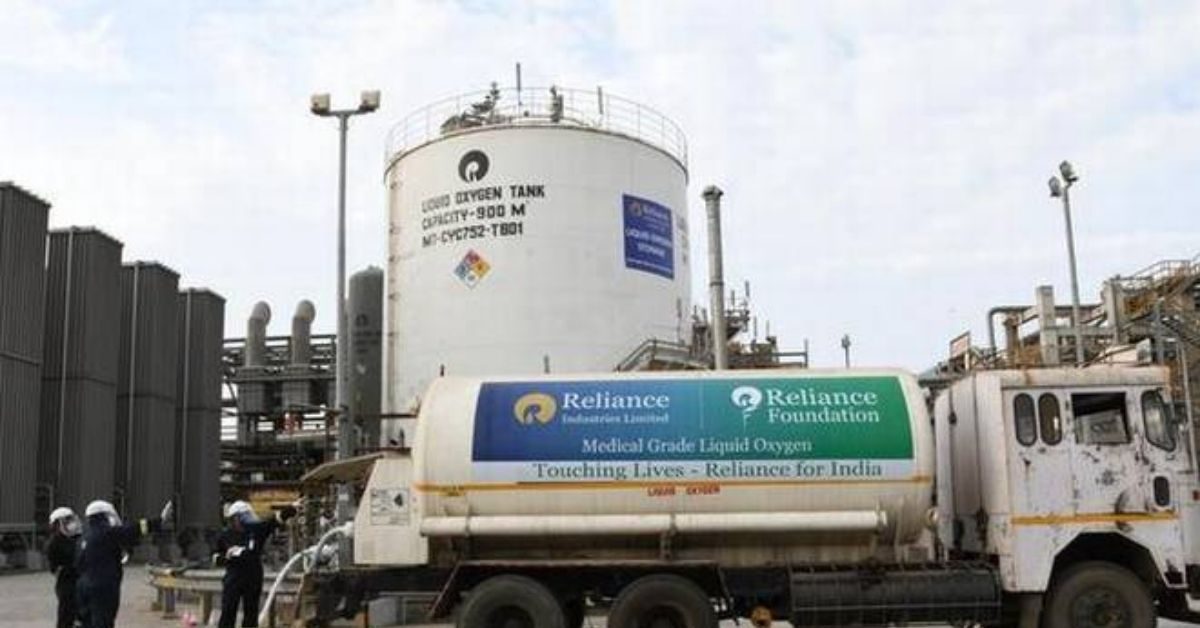Billionaire Mukesh Ambani’s Reliance Industries Ltd is targeting to become one of the largest producers of blue hydrogen globally, producing the zero-emission fuel at costs that will be half of the global average.
The operator of the world’s largest oil refining complex will re-purpose a Rs 30,000 crore plant that currently converts petroleum coke into synthesis gas to produce blue hydrogen for $1.2-1.5 a kilogram, Reliance said in a presentation detailing the separation plan.
Hydrogen is the cleanest form of known fuel. Depending on production methods, hydrogen can be grey, blue or green.
Grey hydrogen is the most common form and is generated from natural gas, or methane, through a process called ‘steam reforming’.
Hydrogen is labelled blue whenever the carbon generated from steam reforming is captured and stored. Blue hydrogen is, therefore, sometimes referred to as carbon neutral as the emissions are not dispersed in the atmosphere.
Green hydrogen – also referred to as ‘clean hydrogen’ – is produced by using clean energy from renewable energy sources, such as solar or wind power, to split water into two hydrogen atoms and one oxygen atom through a process called electrolysis.
Reliance, which has set a net-zero carbon emission target for its businesses by 2035, is looking at blue hydrogen in the interim period to reduction in cost of green hydrogen.
“In the interim, till cost of green hydrogen comes down, RIL can be the first mover to establish a hydrogen ecosystem, with minimal incremental investment, in India,” Reliance Industries Ltd (RIL) said in the presentation.
Syngas has potential to produce hydrogen at a competitive cost of $1.2-1.5 per kg, it said. Green hydrogen produced with renewable resources costs between $3-6.55 per kg, according to the European Commission’s July 2020 hydrogen strategy.
Fossil-based hydrogen costs about $1.80, and the commission estimated the cost of blue hydrogen at about $2.40-3 per kg.
Ambani had previously stated that his group is aiming to produce green hydrogen at $1 per kilogram by the turn of this decade. Last month, he announced plans to invest about $75 billion in renewables infrastructure.
Reliance said RIL’s framework for reducing carbon footprint includes migration from fossil energy to renewables, maximizing sustainable materials and chemicals as part of portfolio, and carbon fixation, capture and utilisation.
“Transition to Net Carbon Zero provides a unique opportunity to unlock value through repurposing of assets and upgradation of configuration,” it said.
At its mega oil refining complex at Jamnagar in Gujarat, the low value fuel streams (off-gases) are taken out from the fuel pool and used as feedstock to convert to high value petrochemicals.
This syngas project will now be transferred to a subsidiary it owns fully with a view to unlocking value. “Jamnagar energy demand is currently met through fossil fuels including syngas from the gasifiers,” it said.
“Fossil fuel can be replaced by renewables, including solar, biomass-based fuel, hydrogen and changing steam drives to electric drives.” Jamnagar will progressively transition to renewables with battery energy storage system (BESS) to meet its electricity and steam demand.
Over a period of time, hydrogen demand will be met by green hydrogen produced through water electrolysis. Repurposing the gasification assets will involve using syngas to produce hydrogen.
“Subsequently, as hydrogen from syngas is replaced by green hydrogen, the entire syngas will be converted to chemicals,” the firm said, adding it will explore biomass feed in gasification to produce green hydrogen.
“Hydrogen production from gasification provides highly concentrated carbon di-oxide (CO2) stream which provides unique opportunity to capture 15 million tonnes per annum of CO2 at 30 per cent of typical cost of carbon capture,” Reliance said adding this CO2 can be monetised by sale to urea producers and other users.
The gasification unit is proposed to be transferred, as a going concern on slump sale basis, by way of the proposed scheme, it said adding the scheme of Arrangement has been presented to National Company Law Tribunal for approval.
Source: Business Standard







